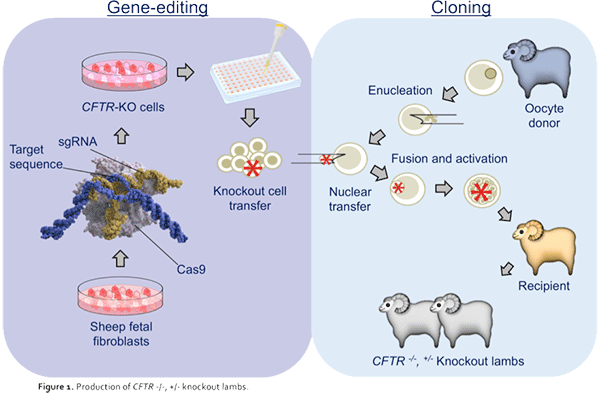General Characteristics
Lifespan: 10-12 years
Gestation time: 142-152 days
Number of lambs: 1-2 lambs
Age to sexual maturity: Ewes, 7-9 months; Rams 7-8 months
Adult weight: Ewes, 68-90 kg; Rams, 100-124 kg
Breed: American Romney

The Cystic Fibrosis Model
The first cystic fibrosis (CF) sheep model was published in 2018.1The model was generated using CRISPR/Cas9 gene editing of sheep fetal fibroblasts that were subsequently reprogrammed and used to clone the CF sheep (Figure 1). Cystic fibrosis sheep shared a similar clinical presentation with human CF patients including intestinal obstruction, pancreatic dysfunction, liver biliary fibrosis, and male infertility.
